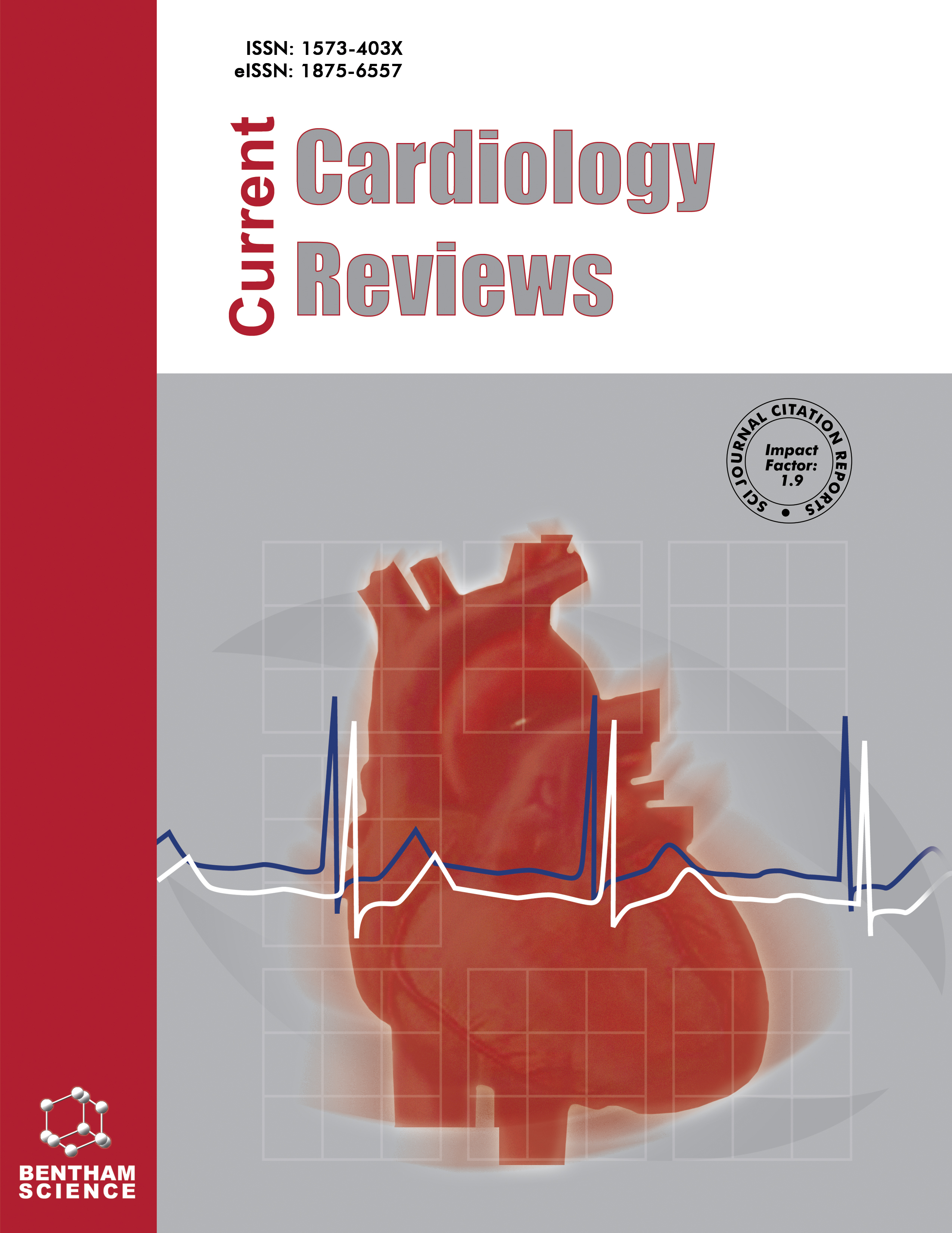- Home
- A-Z Publications
- Current Cardiology Reviews
- Previous Issues
- Volume 10, Issue 1, 2014
Current Cardiology Reviews - Volume 10, Issue 1, 2014
Volume 10, Issue 1, 2014
-
-
Historical Aspects and Relevance of the Human Coronary Collateral Circulation
More LessAuthors: Christian Seiler and Pascal MeierIn 1669, anastomoses between the right and left coronary artery were first documented by Richard Lower of Amsterdam. Using post-mortem imaging, a debate followed on the existence of structural inter-coronary anastomoses, which was not resolved before the first half of the 20ieth century in case of the presence of coronary artery disease (CAD), and not before the early 1960ies in case of the normal human corona Read More
-
-
-
Wave Intensity Analysis in the Human Coronary Circulation in Health and Disease
More LessAuthors: Sayan Sen, Ricardo Petraco, Jamil Mayet and Justin DaviesCoronary artery hemodynamics are very different to that of the systemic arteries; unlike the systemic circulation, in the coronary circulation pressure is generated from both the proximal and distal end of the artery – due to the effect of contraction and relaxation of the myocardium on the microvasculature. As a result, the systemic artery hemodynamic model cannot be used to explain the pressure-flow relationship in t Read More
-
-
-
Determinants of Human Coronary Collaterals
More LessThe human coronary collateral circulation is prognostically relevant. The understanding of collateral formation and its determinants may guide future therapeutic strategies aiming at promoting collateral growth and functionality, and hence reducing the global burden of coronary artery disease (CAD).
-
-
-
Cellular and Pharmacological Targets to Induce Coronary Arteriogenesis
More LessAuthors: Maurits R. Hollander, Anton J.G. Horrevoets and Niels van RoyenThe formation of collateral vessels (arteriogenesis) to sustain perfusion in ischemic tissue is native to the body and can compensate for coronary stenosis. However, arteriogenesis is a complex process and is dependent on many different factors. Although animal studies on collateral formation and stimulation show promising data, clinical trials have failed to replicate these results. Further research to the exact mechanisms is ne Read More
-
-
-
Pathophysiology of Coronary Collaterals
More LessAuthors: Michael Stoller and Christian SeilerWhile the existence of structural adaptation of coronary anastomoses is undisputed, the potential of coronary collaterals to be capable of functional adaptation has been questioned. For many years, collateral vessels were thought to be rigid tubes allowing only limited blood flow governed by the pressure gradient across them. This concept was consistent with the notion that although collaterals could provide adequate blood flow Read More
-
-
-
The Role of Coronary Collaterals in Chronic Total Occlusions
More LessA chronic total occlusion (CTO) describes a completely occluded coronary artery. This type of lesion is found in about 18% of all significant lesions in patients with coronary artery disease. A system of collateral connections are observed in almost all of these lesions, which have the capacity to prevent myocardial necrosis and may even uphold metabolic supply to the territory distal to an occlusion to maintain full contractile cap Read More
-
-
-
Therapeutic Approaches in the Stimulation of the Coronary Collateral Circulation
More LessAuthors: Achim Degen, Dominic Millenaar and Stephan H. SchirmerArteriogenesis as a way to restore blood flow after arterial occlusion has been under investigation for the treatment of coronary artery disease (CAD) for decades. Therapeutic approaches so far have included delivery of cytokines and growth factors as well as mechanical stimulation such as external counterpulsation. As knowledge on the mechanisms of arteriogenesis expanded, new therapeutic approaches have emerged. T Read More
-
-
-
The Future of Collateral Artery Research
More LessAuthors: Nazanin Hakimzadeh, Hein J. Verberne, Maria Siebes and Jan J. PiekIn the event of obstructive coronary artery disease, collateral arteries have been deemed an alternative blood source to preserve myocardial tissue perfusion and function. Monocytes play an important role in modulating this process, by local secretion of growth factors and extracellular matrix degrading enzymes. Extensive efforts have focused on developing compounds for augmenting the growth of collateral vessels (arteriog Read More
-
Volumes & issues
-
Volume 21 (2025)
-
Volume 20 (2024)
-
Volume 19 (2023)
-
Volume 18 (2022)
-
Volume 17 (2021)
-
Volume 16 (2020)
-
Volume 15 (2019)
-
Volume 14 (2018)
-
Volume 13 (2017)
-
Volume 12 (2016)
-
Volume 11 (2015)
-
Volume 10 (2014)
-
Volume 9 (2013)
-
Volume 8 (2012)
-
Volume 7 (2011)
-
Volume 6 (2010)
-
Volume 5 (2009)
-
Volume 4 (2008)
-
Volume 3 (2007)
-
Volume 2 (2006)
-
Volume 1 (2005)
Most Read This Month
Article
content/journals/ccr
Journal
10
5
false
en


